This post is a MANIFESTO on everything I have learned worked and did not work (for me) as a traveling, lactating, human. It is LONG, but it is the resource I wish I would have had when I started on this journey. Note that this is just for domestic travel within the US, and traveling without baby, since that is where my experience is. Hopefully somebody finds it useful.
I’ve pumped at ten conferences so far, seven which required travel (DC, Boston, NYC*2, Mountain View*3). I attended most of these conferences when I was pumping for my first baby (Baby Droid). So far I’ve pumped at one conference for my second baby (Baby Bot), and it was local to Denver.
When I decide I am going to do something in life, I make up my mind and that is it. When I committed to nursing Baby Droid, that was it. I was going to do it. When I committed to continuing to speak at conferences after Baby Droid was born, that was also it. I was going to do it. Little did I know, doing both of those things at the same time was going to be COMPLETE MAD CHAOS, and almost not humanly possible.
Life: "You'll get 5 days away from your baby when you go on this business trip."
Me: "Oh, cool, sounds nice?"
Life: "But you'll have to sit in a room alone for 30 minutes every 2 hours as a robot baby extracts milk from you."
Me: "Losing interest…"— Aimee Free Bird Ault (@aimee_ebooks) February 2, 2018
I suggest you start by reading Work. Pump. Repeat by my personal hero, Jessica Shortall. Among other things, Shortall was the first person to have a baby at her startup, and has experience pumping literally all over the world, from storage closets in LA to rural villages in Nepal. The book is short, easy to read, and most importantly, it gave me the confidence that this could in fact be done.
The Stockpile
If you plan on exclusively feeding your baby breastmilk, and you plan on ever being away from your baby (even for a date, a meetup, or a late night at the office), you’re going to need some kind of stockpile of frozen milk in your freezer. The size of the stockpile you need is going to depend on how long you’d like to be away. On average, a baby will need about 25 oz of milk per 24 hr period (ages 0-6 months). That means for a 2 day conference, with a whirlwind travel schedule, you’d need 75-100 oz. If you have an average milk supply, its going to take you quite awhile to get there, so start that stock-pile as soon as you can!
I personally would try and do an extra pump session every night after baby fell asleep, once he was about 3 months old, to slowly build up my stockpile. Start early, because your body can only make so much milk so fast! At times my extra session would barely yield an ounce, but every tiny bit matters. Slow and steady wins the race. Another great way to build up a stash is with the Haakaa. Its a much more passive way to get milk, its less painful, and its easier to clean! I can get about 0.5-1 oz by doing this while I feed baby before leaving for work in the morning.
Getting the sufficient stockpile when baby was eating ONLY my milk was very stressful for me. Shortly after my first baby was born, I was confirmed as the opening keynote speaker for an out-of-state conference. I knew I had to hit the mark for a sufficient stock-pile, and it was all up to me.
Additionally, you’ll need to make sure your baby is chill with being bottle fed AND drinking frozen-then-thawed milk, long before you leave on your trip. If your baby is resisting the bottle for some reason, you’ll want to know that as soon as possible. Also, freezing and thawing milk does change the taste, and your baby might need a bit of time to adjust.
The Goal of Pumping while Traveling
A lactating human is in constant feedback loop. Baby eats more, body makes more. Baby eats less, body makes less. My ultimate goal when traveling was to keep my every-3-hrs pumping schedule so I would not lose my supply, and not to get a blockage that led to mastitis. While I desperately wanted to also save every milliliter of milk I pumped, I tried to view any milk I brought home as a bonus. Setting these expectations with myself really gave me peace of mind as I entered this overwhelming endeavor.
Traveling Supplies
Here are the supplies I bring when I travel:
- Bottle brush
- Travel bottle of dish soap
- Tons of plastic milk storage bags
- Sharpie to label milk bags
- Small cooler
- 2 sets of pump parts
- Electric breast pump and power block
- Battery power block (& extra batteries)
- Hand pump attachment
- Hands-free pumping bra
- Nursing cover
- Box of plastic zip lock gallon freezer bags
Most of this is pretty self-explanatory. Bringing 2 sets of parts makes it nice if you don’t have time to wash a set before you need to pump again (which, lets be honest, will happen basically every time). Also, in the event that something is lost or broken, you won’t be totally screwed. You will at least have the full second set to get you through until you can stop by a Target or Walmart and replace your parts. My pump parts (Medela Pump in Style) are awkward shapes and not very compact, so bringing any more than 2 sets would have been hard.
The plastic zip lock freezer bags are so useful. Store used pump parts, ice, bottle brushes, etc. You’ll need to toss the bags once they have had any used parts in them, so that is why you will need to bring so many.
The best milk storage bags in my opinion are these by Lansinoh. They hold a lot of milk, are reliable, are easy to pour into, and are easy to pour out of. You’d be surprised, but a lot of other milk storage bags are not any of these things. 🤦♀️
This packing list is the most minimal scope I could manage, while still fitting into my standard luggage of Carry On and Personal Item. The small cooler was the only additional thing I’d carry around, and I’ll explain later how to manage these 3 pieces of luggage on an airplane.
I brought my nursing cover on a whim for my first trip. It has been a total life saver for me, when I have to pump some place totally crazy, like the gate at La Guardia airport for example or even at my seat on the airplane).
I'm shocked, shocked that La Guardia doesn't have a mother's room 😑 pic.twitter.com/JUHRBCHRb5
— Kelly Shuster (@KellyShuster) October 15, 2017
Finally, the hand pump is also great. I use the Medela Pump in Style (because it was free with my insurance, thanks Obama!), so I can just bring the Harmony attachment, and it works with all of my other pump parts. The hand pump is so useful to have when you don’t have access to an outlet, your pump battery pack is dead, you want something low-profile that fits in your purse (think, speaker’s party), or something happens to your electric pump (reader, Google once lost my electric pump!).
TSA
TSA is already such a headache, but they are even more so as a pumping person. Thankfully, a “reasonable” amount of breastmilk is allowed to be carried on the plane with you. The exact amount is not defined by the TSA. I print out the TSA rules and always bring them with me, so I can pull them out in case I’m getting trouble. So far, everyone has been knowledgeable, though.
Flying to a conference is relatively easy, because when you check in and go through TSA, you probably don’t have any milk with you. With the new TSA rules, you may need to remove your pump from your luggage and send it through the X-Ray on its own (same as you do with your laptop).
Flying home is a much bigger ordeal, because you will also have your milk with you. (For very long trips, some folks FedEx their milk home in batches, but I’ve never done that. I always just bring it with me on the plane.)
The easiest route would be to have the milk with me, frozen. Frozen milk is not subject to extra screening. In fact every blog post, book, and forum I ever read on this seemed to swear by freezing milk as the best option. However, I have never had ANY luck with actually getting my milk to freeze while on trips! Hotel rooms have mini-fridges, but they typically don’t have freezers. Once I asked a hotel to store my milk in their restaurant freezer for me. It was a huge hassle to bring them the milk every night, and then in the end they didn’t actually have it stored in their freezer! So after all that, my milk was in a fridge UGH.
I did a trial run once by freezing a small amount of milk at home, and bringing it with me when I flew to a conference. Even though my cooler was packed with ice, the milk was still half-thawed by the time I finally reached my destination. Once human milk has been thawed, you only have 24 hrs to use it. So, I definitely don’t want to chance my milk thawing. Additionally, there’s never been enough time for me to freeze my last pump before taking off to the airport, so I’m always going to have at least some liquid milk. For this reason, I’ve 100% given up on freezing my milk while I travel, and I just take liquid milk and deal with the second screening.
There are various ways that TSA screens your milk. They should never open your containers of milk. They can do some screening by wiping the outside of the container and / or shooting some kind of laser through the milk bag / bottles. This is very time consuming, as they have to check each container. Get to the airport early to make sure you have time for all this.
TSA has to check each “container” of milk. I typically put a days-worth of pumped milk bags into a large ziplock freezer bag. This makes my life easier, as I don’t have to worry about any spills leaking everywhere, and its easier to move around a few big bags vs a ton of tiny bags. The added benefit of this was that many times, TSA agents counted my days-worth of milk freezer bag as the “container” of milk, so they just had to test against 3 bags vs 20+ bags.
A Word About Ice Packs
I have a few reusable ice packs that I thought would be nice to bring with me. This ended up being a very bad idea. TSA will allow you to bring reusable ice packs with you, as long as they are frozen. If you had a long journey to the airport, and your ice packs thaw, well TSA will have to throw them away. 🙁
Related to my previous comment, I have had a really hard time keeping these ice packs frozen anyway, and its really not worth it. The strategy that I’ve found to work best instead, is a zip lock freezer bag. Ask the hotel bar to fill your freezer bag with ice, then put that in your cooler for the journey to the airport. Then right before you go through TSA, empty the ice into a sink. After you are through TSA, ask a restaurant in the terminal to fill your bag back up. (Also note that flight attendants have always been willing to get me fresh ice for my cooler as well, if I really needed it during a longer flight.)
The Airport
Many Airports are starting to have pumping rooms, which is awesome! DIA has a particularly spa-like nursing room.
Uhh ok its official: @DENAirport has the most VIP mother's room of ALL TIME pic.twitter.com/QWSKDsxVP0
— Kelly Shuster (@KellyShuster) October 13, 2017
If this is the case, AWESOME. USE IT! CELEBRATE IT! If you don’t see a nursing room on the signs, get in touch with the airport’s information folks via phone or desk. Sometimes the rooms are so new, they just aren’t on signs or maps yet.
If there is no nursing room, this is also an acceptable time to check out the Family Restroom, and see if its conducive to pumping. You might get some looks entering a Family Restroom as a single person, but just hold your head high and carry on; pumping milk for your baby is absolutely a valid use of the Family Restroom space, and many airports specifically advise you do this.
If all else fails, whip out your nursing cover and pump at the gate behind some benches. (I’M LOOKING AT YOU, LA GUARDIA!)
I try and pump as close I can to my boarding time, that way I can avoid pumping on the plane itself, if at all possible.
The Flight
Each airline will have their own rules about what you can carry on or not, but pretty consistently I’ve seen that the pump is considered a medical device. Medical devices get a “free pass” to be carried on (it doesn’t count agains the carry on bag limit). Unfortunately, while you are allowed to take breastmilk on a plane, it does not get a free pass (the bag/cooler you are storing milk in does count against your carry on bag limit).
Here is my break-down of what I travel with:
- Carry-On: Blue back pack with my regular travel stuff
- Personal Item: Cooler with milk, pump parts, and ice
- Medical Device: Black bag with pump, pump accessories
I typically throw a water bottle, book, and headphones in my pump bag, and nobody has ever hassled me about having non-pumping stuff in my pump bag. (Though I’m always prepared to quickly move these items to my blue back pack if I need.) Here is what my pump bag looks like, for inspection. Almost all pumping / medical related.
I’ve gotten lots of dirty looks from passengers who assume I’m gaming the system by sneaking on an extra bag, but only one flight attendant has ever said anything to me. As soon as I mentioned I was a pumping mom, she was really nice and helpful!
Do make sure that you have everything you absolutely need for pumping/milk split between your “Medical Device” pump bag and your “Personal Item” cooler. Sometimes flights are just really full, and they’ll still need you to check at least one bag. I am tied to my pump, and there is also no way my milk is leaving my sight. By making sure I’m super organized, I can quickly check my “Carry On” blue backpack, and know I’ve still got everything I need onboard and accessible.
I do everything I can to not need to pump on the airplane, but depending on flight delays or length of flight, I may have no choice. If I have to pump on the plane, I’m not interested in pumping in an airplane bathroom, for a variety of reasons. I’ve pumped in my seat twice on a plane and it definitely sucked but it worked. Again, the nursing cover is your friend here!
After pumping, I’d put my milk and parts in the cooler with the ice. Remember that the water in airplane bathrooms is non-potable, so you should not use it to wash your pump parts. Just wait til you get to the airport or hotel to wash out the parts.
The Hotel
As soon as you know where you will be staying, reach out to the hotel to confirm the presence of a mini-fridge in your room. Most rooms have these as a standard, but some hotels will need to make a special note for you to have a mini-fridge delivered to your room upon arrival. As I mentioned previously, I’ve never been able to secure access to a freezer in my room. Some mini-fridges have a freezer compartment, but its never been cold enough to freeze my milk all the way through.
Some in-room fridges will be stocked with mini-bar items, with weighted sensors, such that you are charged as soon as items are removed from the fridge! Be sure to confirm with hotel staff that you need the fridge for your milk, and that you will not be charged for removing items. I’ve never had problems with this, but I over-communicated the situation to everyone on staff!
If the mini-fridge needs to be delivered to your room, it might not be there right when you check in. Waiting around for a fridge is the last thing you want to do when you have pumped milk from your travel day, you need to pump again, and you’re already running late for the speaker’s dinner! Be prepared to press the hotel staff for fast delivery, or ask them to store your milk int their fridge while you are out.
You may also arrive at your hotel before check-in time. Sometimes hotels will find a way to check you in early when you tell them your situation. Otherwise, they’ve always been pretty accommodating to find me an empty conference room or some place to pump, and taken my milk back to the kitchen fridge while I wait for a room.
I’m a frugal traveller, so I usually stay at a bedroom in an AirBnb or hostel to save money. I think these would be pretty challenging places to stay while also pumping, due to far proximity from conference venue, less accommodating on check-in times, sharing rooms, etc. I’m sure people have done it, but I personally would have been overwhelmed by it. For this reason, while pumping I only travelled to conferences where I had the hotel cost covered for me by another organization.
Staying at a hotel is also nice, because you have your own bathroom to wash and dry out your pump parts. Yes folks, if this all wasn’t already exhausting enough, you’ll be doing several rounds of hand washing dishes during your trip! 😅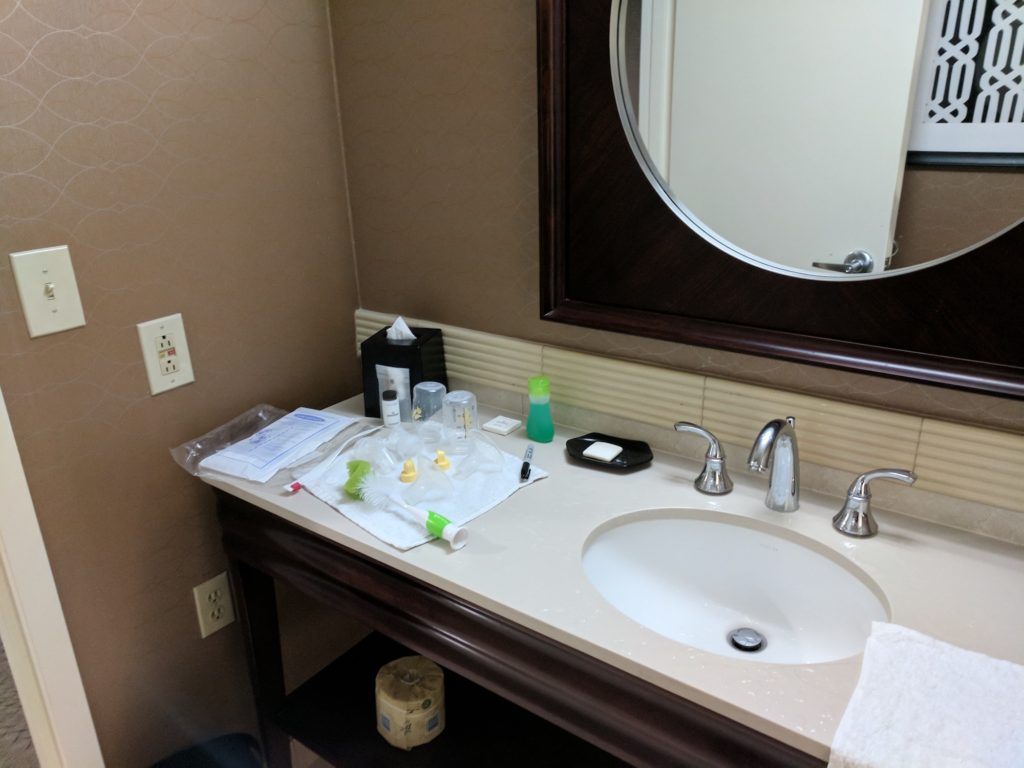
Shout out to Dream in NYC for providing pumping mom’s with this special bottle brush holder in their bathrooms! 😉
The Conference
If you will be staying at the conference hotel, you will be able to easily go to your room whenever you’d like to pump, and just store your milk in the fridge there! This is the ideal situation. If you will be traveling to and from the venue, you’ll need to arrange a pumping spot at the venue.
As soon as you have decided to attend the conference, reach out to the organizers and let them know about the accommodations you will need. It is highly likely you will be the first / only lactating person to attend said conference, so the organizers will probably not exactly know what you will need. Help them out by being as clear as possible:
Hi <conf organizer>,
I’m so excited to attend your conference next month! I am currently pumping milk for my new baby, and will need to pump every 3 hrs while I’m at your conference. Do you have a place where I can do this? I’d need a private room that locks, which has access to an outlet. I’ll also need access to a refrigerator to store my pumped milk.
Cheers,
Kelly
It is good to reach out to them as early as possible, because they will need time to coordinate with the venue on the best way to set up this space. I’ve pumped in some less than ideal places (eg, a cubical in a mostly-empty office), but I get it that not every venue has the ideal space for pumping. (Again, the nursing cover is handy in these situations.) You’ll just want to be really clear in understanding the space they have available, and make sure its something you feel comfortable with before confirming your attendance.
In my sample email, you can see that while I have a friendly and positive tone, I’m making it clear that access to pumping space is something I require. I’ve been very lucky so far that conferences have been able to accommodate me, but I’ve always been 100% prepared to pull out of a conference if they could not.
Once the conference confirms they have a spot for you to pump, you’ll also need to work out how you gain access to it. Most conferences I’ve spoken at have the lactation room on lock-down, so I’d need to be escorted to and from the room by a security officer or hotel employee. They may require you to submit specific times you need to access the room ahead of the conference.
Regardless if time sign-up is required or not, I think it is always a good idea to give yourself specific times you want to step out of the conference and pump. Set your times based on biological need as well as prioritizing talks you want to see the most! My first conference pumping I was so surprised at how much content I missed because my pumping schedule was badly designed. 🙁 Try and line up your times with any conference breaks, or missing talks you are less excited about. I found that I was able to hear more content overall if I planned on pumping on the :40, vs on the hour. Talks usually start very close to the scheduled time (on the hour), and usually are done or are into Q&A by the 0:45 marker. Since the value of Q&A is hit or miss, I’d rather skip that than the first part of the talk.
At Google I/O, the nursing rooms were not on lockdown, but they did have time sign-up sheets posted the morning of each conference day. My first order of business each day was to race to the sign up sheet and try and get my first choice of pumping times.
It is also worth asking if the pump rooms have a hospital grade pump for community use, and if you would be allowed to use it. Google was so kind to provide hospital grade Medela Symphony pumps in their nursing rooms at Google I/O. While I do own the special attachment piece for this pump, I didn’t pack it, so I couldn’t take advantage of the pump during the conference. While I still would have needed to bring my pump on the trip to California, it would be have been really nice to not have to lug my pump to and from the conference location each day, and only bring my pump parts and cooler.
Usually you can store your pump in the pumping room, so you don’t have to carry it around during the whole conference. That being said, definitely take your pump and milk with you after your last pump session of the day! I typically would leave my things in the room until the last talk of the day, so I wouldn’t have to carry them around. However, my pump was accidentally packed away by an overzealous clean-up crew at Google I/O! With the enormous size of the event, and the fact that most personnel had left before the event ended, it was impossible to find somebody that knew where my pump went.
After frantically Slacking and Tweeting everyone I knew at Google, I had to leave Shoreline Amphitheater to catch my flight home without my pump. Not only was I so so sad to have lost a very expensive piece of equipment, I was in a lot of physical pain. Thank goodness I had my hand pump, so I could relieve some pressure on my journey home, but it still resulted in a blocked duct which took a few days to resolve. I would have been in a much worse situation without my hand pump, though!
With a lot of hard work from some dear friends at Google, my pump was miraculously FOUND and mailed back to me! Another tip: always put your name and contact information on your pump!! It would have made this whole situation easier to figure out.
Speaking
If you are planning to speak at the conference, you’ll want to make sure you pump as close to your talk as you can, to make sure you don’t leak during your talk! 😅 This will also give you some buffer time to chat with people after your talk, too.
A big part of why I go to conferences is the networking and personal connections I make during the event and after-conference dinners and parties. In order to try and not miss out as much, I pump w/ the electric pump right before I have to leave the conf/hotel, and bring the hand pump with me in my purse. At the party or bar I slip away to the restroom and do a little pumping. Not going to yield much, but at this point its just to take the edge off, so I’m not in terrible pain or risking a blockage.
Speaking of blockages… I have yet to take a trip away from baby where I didn’t get one. 😢The longer the trip, the worse it was, because my body responds differently to pumping 24/7 vs pumping and baby eating. Every person is different, of course, but do keep that in mind when determining the timeline of your first trip.
In Conclusion… This is doable, but quite hard!
Unfortunately for all of us, the way lactation works is not commonly understood. I certainly didn’t fully understand how it worked until I was going through it myself! Because of this, it can be very difficult for other folks to empathize. Many people don’t understand the physical pain and legitimate health dangers associated with waiting too long to pump. They don’t understand how difficult it is to produce every ounce, and how important it is to maintain supply when traveling. It can be so frustrating to deal with this ignorance when you yourself are living it… Just try your best and calmly educate folks on an as-needed basis.
A lot of times, when people see I scaled back my conference speaking once I became a mom, they are like “Oh yeah, you would miss your baby too much.” Which, sure. Baby Droid is freaking adorable, and I do miss him. But also…. just being honest here, pumping and traveling is a total massive pain in the ass. Also, it means that at this point in my life, traveling isn’t exactly a “break” from the responsibilities of motherhood. Sure, I do get a break from many of the stressors. But I also have to do a lot of these other random things. Overall, I found traveling as a pumping mom to not be a “break” at all; it is *more* stressful than just staying home and taking care of baby. I got better at it each time I did it, but it always sucked.
This is actually one of the reasons I’ve not done any traveling after having my second baby (that, and the fact that having TWO small children and working full-time is kind of like, enough on my plate right now 😅). I personally found the process of building up the required stash of milk very overwhelming. Then the trips themselves were also very stressful, and I’m not able to engage with the people, the content, or the geographic location in the way that I really want. Over time I realized that traveling while pumping, at least for the first few months while I’m baby’s sole food source, was not really worth it to me. Like all things parenting related “this too shall pass.” It is only a matter of months that a baby is 100% dependent on my milk, so I can just wait.
For my second baby, I’ve still worked hard to create a stash, but I’ve been able to have more flexibility in building it since I’m not against a real deadline of a committed out-of-state speaking engagement. I’ve prioritized attending local conferences and meetups during this time, with an eye towards traveling again once baby is a bit older. I also have to say, now that I’ve figured a lot of this stuff out with my first baby, its a bit more on auto-pilot with my second baby. Its easier… but still really hard! 😅
Phew, I hope you found this helpful! Let me know in the comments down below if you have any questions or if there was something I missed!

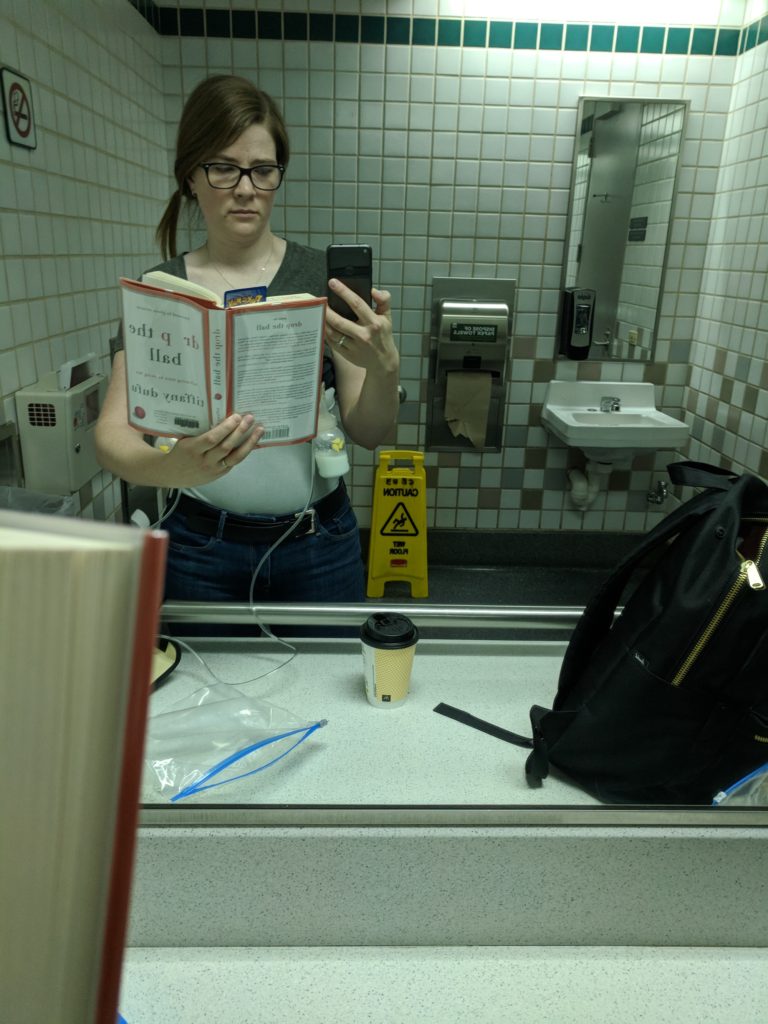
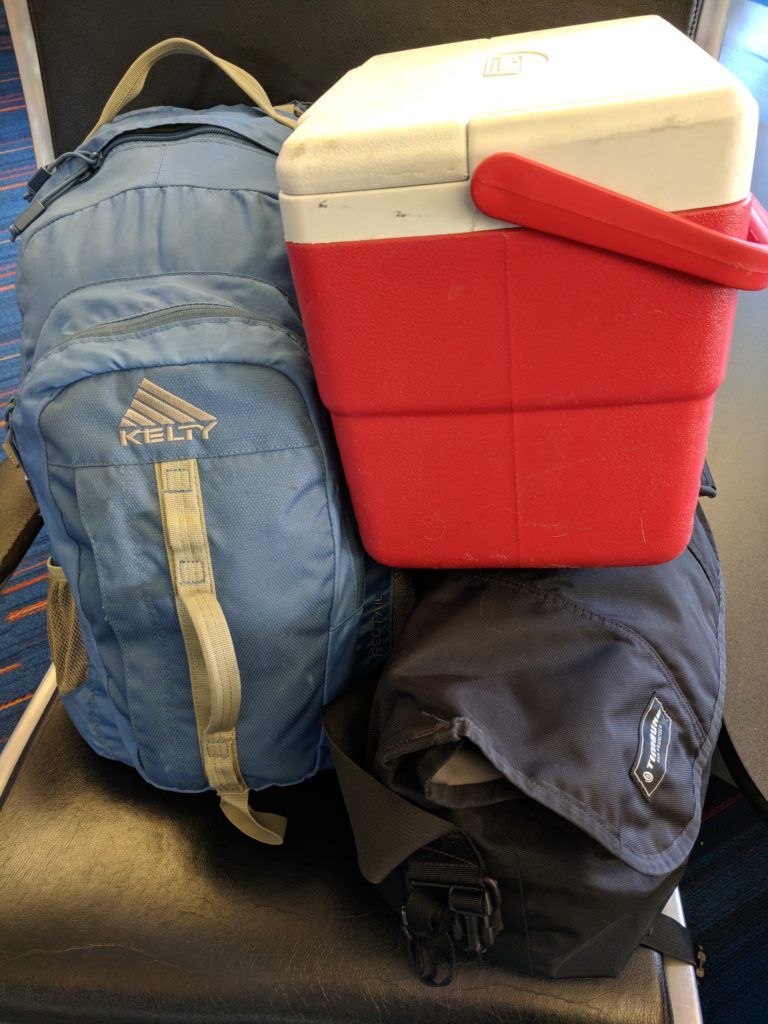
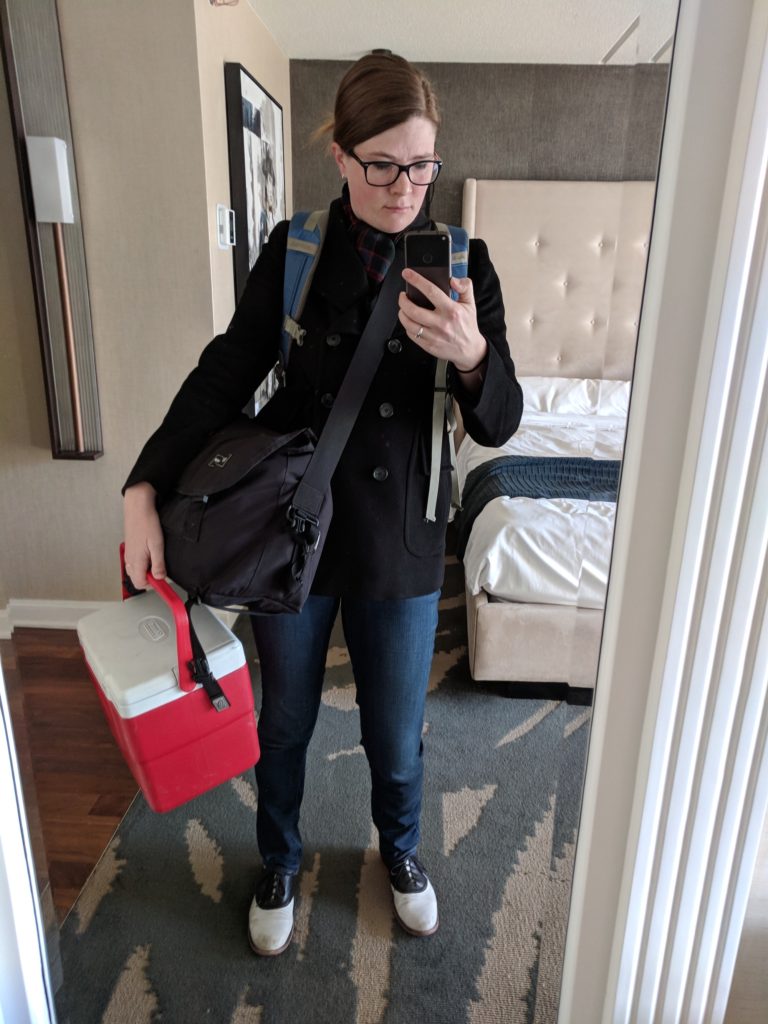

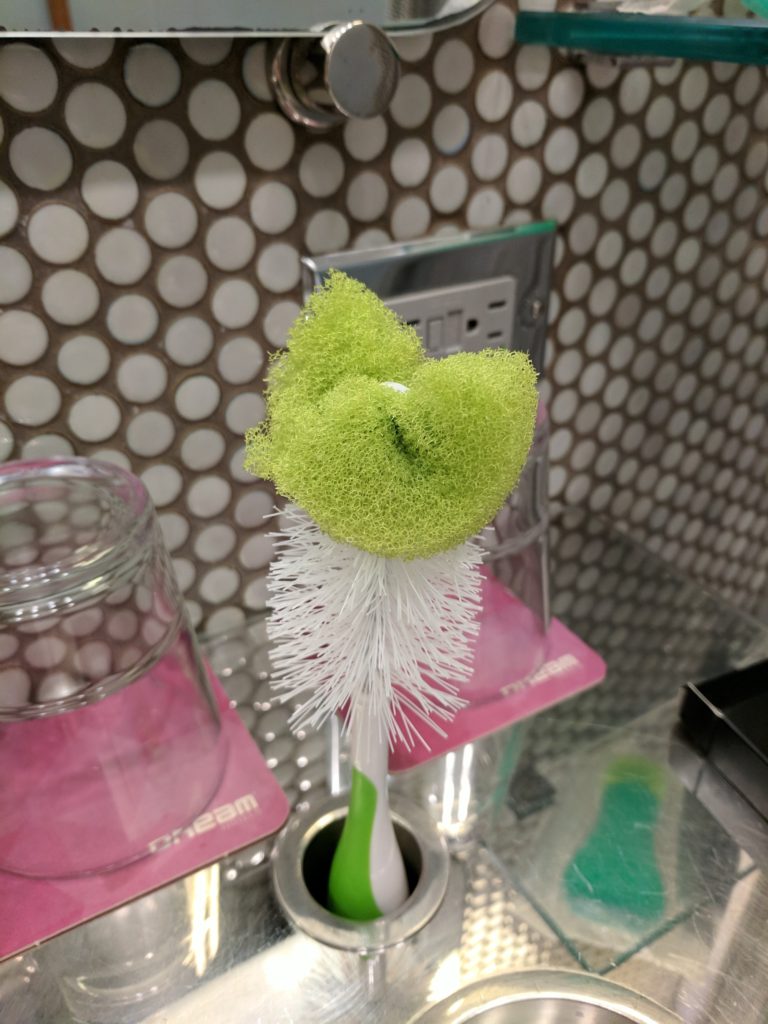
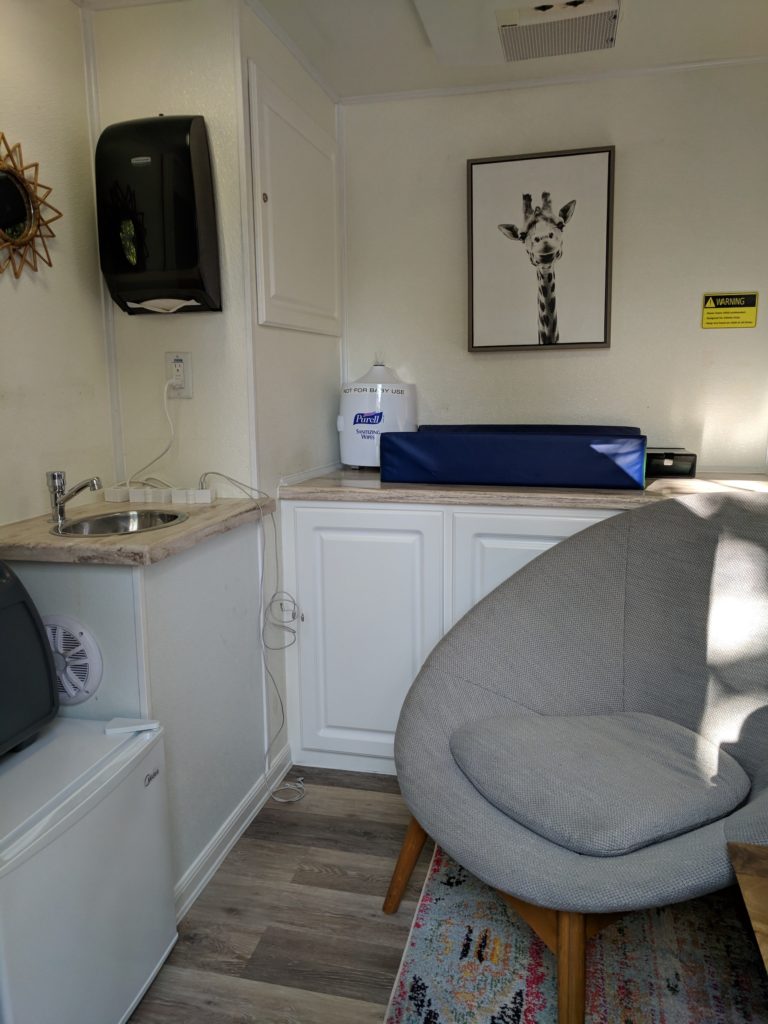
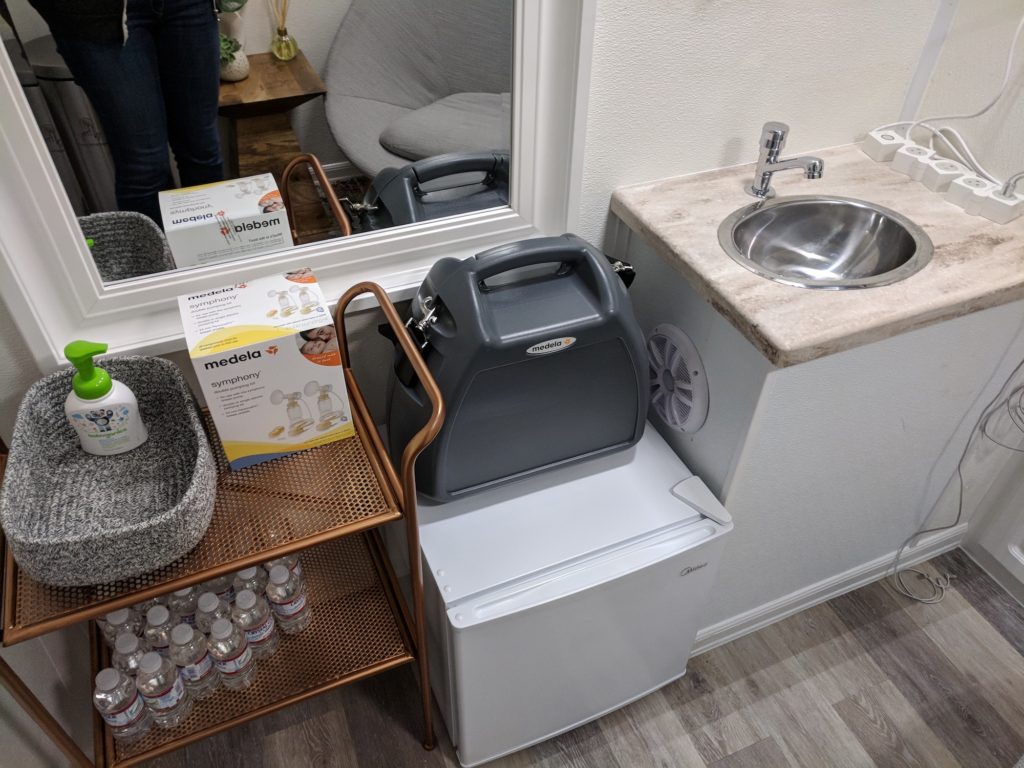
Wow! This is everything. Thank you for sharing.
This was helpful! Since this post, have you been to a one day conference or a conference where you’re weren’t staying at the hotel? Curious how you kept your milk cold throughout the day without access to a room with a fridge. Thank you !